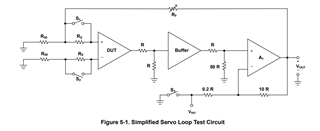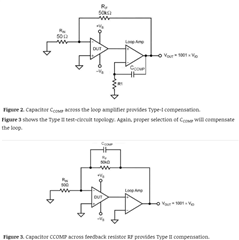- Ask a related questionWhat is a related question?A related question is a question created from another question. When the related question is created, it will be automatically linked to the original question.
This thread has been locked.
If you have a related question, please click the "Ask a related question" button in the top right corner. The newly created question will be automatically linked to this question.
Tool/software:
Hi Experts,
We have query from user about this appnote:
Figure 5-1 (page 8):

Question on what kind of test circuit is TI using for their Input offset voltage measurements depending on the Common mode voltage of the Op amp.
His concern, if understand correctly, is that by changing the common mode voltage at the inputs of the device under test the Vcm will show at the output of the device alongside the amplified offset voltage. Then to get the Input offset voltage I would have to subtract the set Vcm from the output. Which brings a problem which don't know how to do. Also know that the Vcm of the device can be changed by symmetrical power rails.
Curious how does TI perform this test.
Thank you for your assistance.
Regards,
Archie A.
Hi Archie,
what kind of test circuit is TI using for their Input offset voltage measurements depending on the Common mode voltage of the Op amp.
The image below is twi standard Vos test methods in ATE implementation. There are other variations, such as the one presented above. By toggling the relay switches, one circuit is capable to measure different op amp DUT parameters during ATE screen tests.

I recently replied similar question, see the links below.
https://www.edn.com/the-basics-of-testing-op-amps-part-3-configurable-circuit-tests-op-amps/
https://www.edn.com/the-basics-of-testing-op-amps-part-4testing-op-amps-requires-stable-test-loops/
Then to get the Input offset voltage I would have to subtract the set Vcm from the output.
In difference amplifier topology, the Vout = Gain*(Vin+ - Vin-), so the Vcm will be subtracted from the difference amplifier by design, and it does not enter the transfer function. However, Vos may be affected slightly by Vcm variation, but this is typically plotted and presented in the datasheet.
If you have other questions, please let us know.
Best,
Raymond